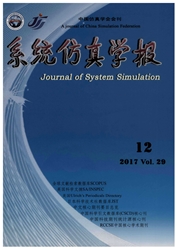

 中文摘要:
中文摘要:
从地铁枢纽站台乘客行为的时空分布特点出发,以元胞自动机模型为基础,建立了面向地铁枢纽环境的乘客行为仿真模型。该模型引入势能场的概念和个体决策规则,提出了复杂拥挤条件下个体方向选择与行为决策模拟问题的解决方案,能够准确模拟不同密度条件下的个体行为,并有效反映集体行为的宏观特征。以北京地铁复兴门换乘站2号线站台为对象,应用STARLOGO软件进行了计算机仿真,通过现场观测数据对模型进行了校核与检验,并对站台分区域的服务水平进行了分析。
 英文摘要:
英文摘要:
Based on the traits of passenger behavior in MTR stations, a cellular automata-based simulation model for passengers in MTR stations was presented. The model introduced potentialfield and individual decision rule and provided an access to the solution of direction choice and movement decision in complex environment with high density of pedestrians. The model is effective in the simulation of individual movement over a range of densities, while the macroscopic traits of collective behavior are also captured. The platform (line 2) of Fuxingmen station of Beijing metro was selected for case study. Simulation experiments developed by STARLOGO ran for the verification and validation of the model. For all parts of the platform, the percentage of time that this part has a specific level-of-service was calculated during the simulation.
 同期刊论文项目
同期刊论文项目
 同项目期刊论文
同项目期刊论文
 期刊信息
期刊信息
